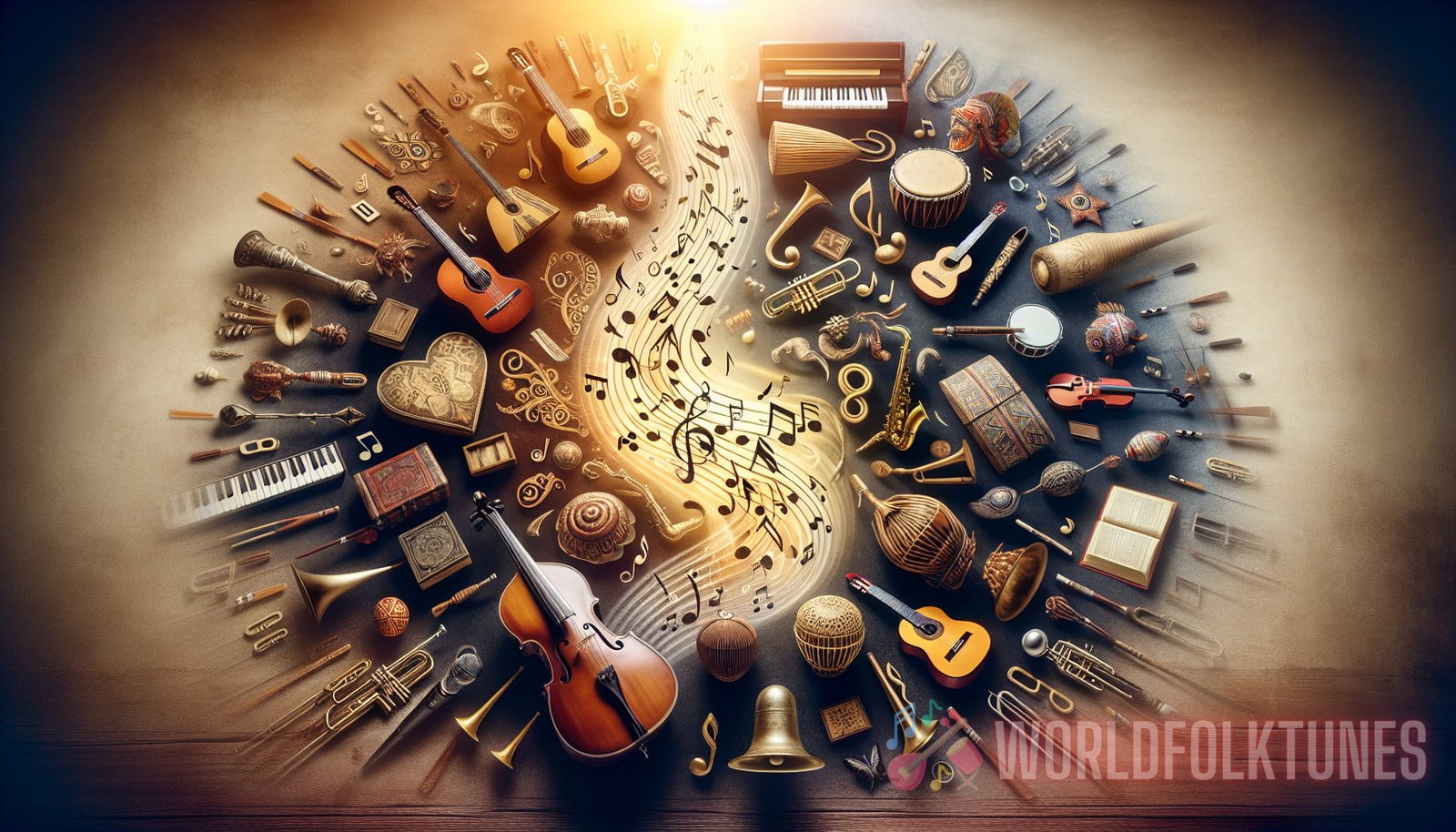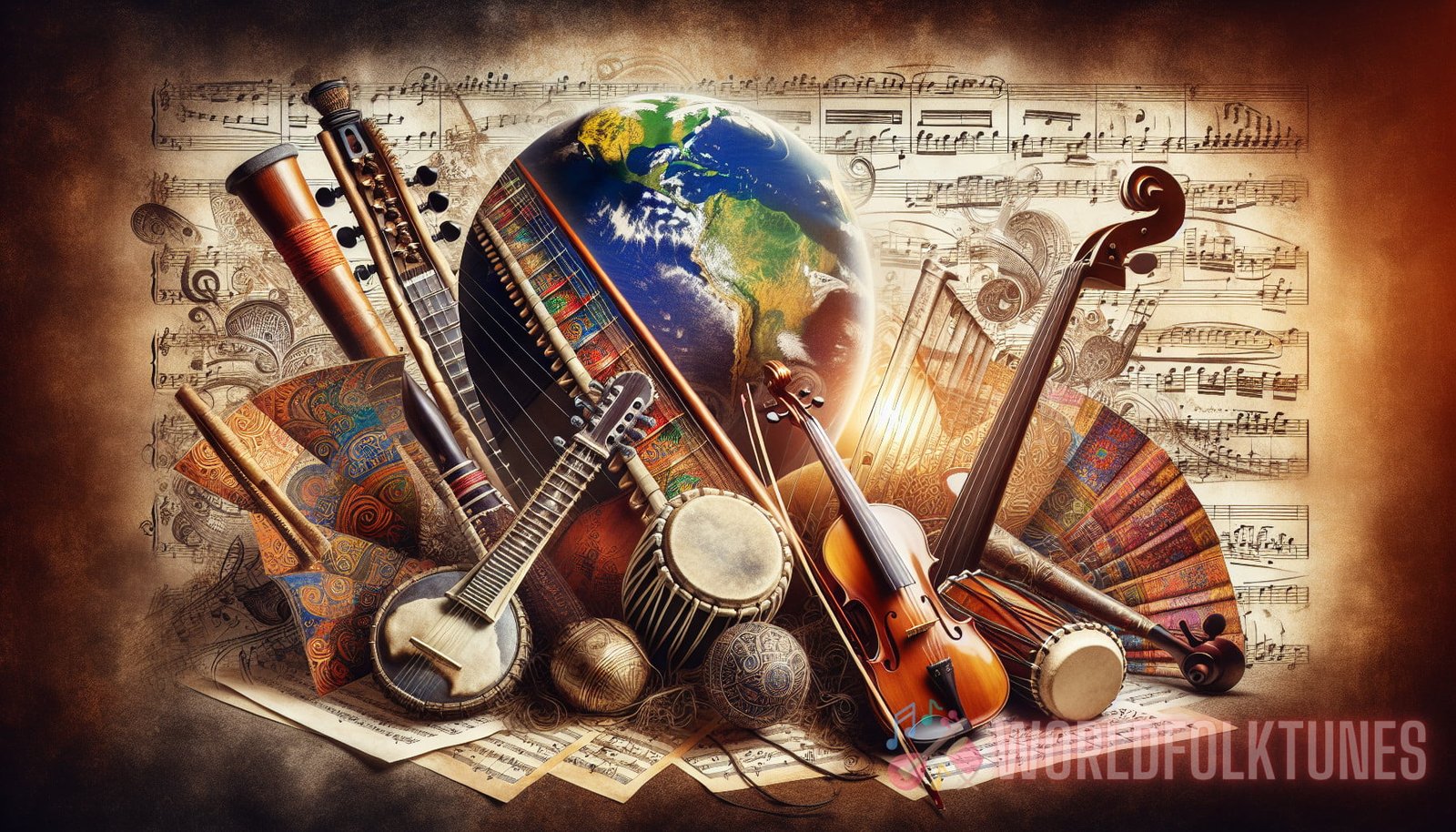Introduction
When it comes to music, the beauty lies in its ability to transcend boundaries and bring people from diverse cultural backgrounds together. One such remarkable phenomenon is the fusion of harmonies, where different musical traditions merge to create a captivating blend of timeless melodies. This enchanting fusion of musical cultures has not only revitalized traditional music forms but also introduced a new wave of creativity.
The Essence of Fusion Harmonies
The concept of fusion harmonies is rooted in the belief that music is a universal language that can be spoken by all. It goes beyond mere experimentation and represents a deep understanding and appreciation of various musical traditions. By combining elements from different cultures, fusion harmonies create a unique sound that resonates with audiences across the globe.
Unlike other forms of music, fusion harmonies do not seek to diminish the individuality of each tradition involved. Instead, they celebrate the essence of each culture while exploring the infinite possibilities that arise when these traditions intertwine. This musical genre is a melting pot of sounds, instruments, and vocal styles, resulting in a harmonious fusion that captivates the senses.
Historical Significance
Fusion harmonies have a rich historical significance, with traces of its existence dating back centuries. Many ancient cultures engaged in musical exchanges and cross-cultural collaborations, leading to the birth of unique musical traditions. For instance, the Silk Road, which connected the East and the West, facilitated cultural exchange and trade, resulting in a blend of musical influences along its vast network.
However, it was during the 20th century that fusion harmonies gained significant momentum and recognition. Musicians like Ravi Shankar, who popularized Indian classical music in the West, and John Coltrane, who incorporated Indian ragas into his jazz compositions, were pioneers in this movement. Their contributions paved the way for future generations of artists to explore and experiment with fusion harmonies.
Today, fusion harmonies have reached new heights of popularity due to the advancements in technology and increased accessibility to a wide range of musical styles. Artists are now able to collaborate across borders, seamlessly blend different musical elements, and reach a global audience.
Elements of Fusion Harmonies
Fusion harmonies draw inspiration from various musical traditions, incorporating elements from different genres and cultures. These elements play a crucial role in shaping the unique sound of fusion harmonies. Some of the key elements include:
1. Melodies and Scales
Fusion harmonies often feature melodies and scales from different musical traditions. Artists carefully select scales that complement each other and create a harmonious blend. For example, a musician might combine the melodic structure of Indian classical music with the pentatonic scale commonly found in traditional African music.
The use of different scales adds depth and complexity to the composition, giving it a unique flavor that is distinct from traditional music forms. This musical tapestry interweaves the melodic intricacies of various cultures, resulting in a captivating fusion of harmonies.
2. Rhythms and Percussion
Rhythms form the backbone of any musical composition, and fusion harmonies are no exception. In fusion harmonies, artists often incorporate rhythms and percussion instruments from different traditions to create a rhythmic tapestry that is both intricate and engaging.
For example, a fusion composition might combine the complex rhythms of Afro-Cuban music with the syncopated beats of jazz. The result is a rhythmic fusion that infuses new life into the music, creating a dynamic and pulsating sound.
3. Instruments
Fusion harmonies also explore a diverse range of instruments from different cultures. Artists experiment with traditional instruments from various musical traditions, integrating them into their compositions to create a unique sonic experience.
For instance, a fusion ensemble might include instruments such as the sitar from India, the djembe from West Africa, and the saxophone from the West. The combination of these instruments adds depth and richness to the music, allowing artists to create a kaleidoscope of sounds that transcends cultural boundaries.
4. Vocal Styles
Vocal styles play a vital role in fusion harmonies, adding a human element to the music. Artists often combine different vocal techniques and styles from various cultures to create a diverse and captivating vocal tapestry.
For example, a fusion composition might feature the melismatic singing style of Indian classical music alongside the soulful vocals commonly associated with blues. This fusion of vocal styles adds an emotional depth to the music, transporting the listener to a different realm.
Fusion Harmonies in Different Musical Traditions
Fusion harmonies have had a profound impact on various musical traditions across the globe. Artists from different cultures have embraced fusion harmonies, infusing their traditional music forms with elements from other traditions. Some notable examples include:
1. Jazz Fusion
Jazz fusion emerged in the late 1960s and early 1970s as a result of the blending of jazz with elements of rock, funk, and world music. Artists like Miles Davis, Herbie Hancock, and Weather Report explored fusion harmonies by incorporating elements from various musical traditions into their compositions.
One of the defining characteristics of jazz fusion is the fusion of improvisation with complex harmony. Musicians combine elements of traditional jazz improvisation with the rhythmic and melodic intricacies of other musical traditions.

An article available at worldfolktunes.space explores the beauty of jazz fusion and its impact on the musical landscape.
2. World Music Fusion
World music fusion is a broad term that encompasses various musical genres and styles from around the world. It refers to the fusion of traditional music forms with contemporary elements, creating a unique sound that reflects both the past and the present.
Artists like Yo-Yo Ma, Ali Farka Touré, and Anoushka Shankar have embraced world music fusion, blending elements from different musical traditions to create compositions that transcend cultural boundaries.
3. Classical Fusion
Classical fusion combines elements from Western classical music with traditional music forms from other cultures. This genre of fusion harmonies showcases the versatility of classical music and its ability to adapt to different cultural contexts.
Artists like Philip Glass, John McLaughlin, and Ananda Shankar have created compositions that blend Western classical music with elements from Indian classical music, creating a unique and enchanting fusion of harmonies.
For a captivating review of live performances that embody the essence of fusion harmonies, read the article available at worldfolktunes.space.
The Global Impact of Fusion Harmonies
The fusion of harmonies has had a profound impact on the global music scene. It has not only expanded the boundaries of traditional music forms but also facilitated cross-cultural understanding and collaboration. Some significant aspects of the global impact of fusion harmonies include:
1. Cultural Exchange and Understanding
Fusion harmonies enable cultural exchange and understanding by bringing artists from different backgrounds together. Through collaborative efforts, artists share their respective musical traditions, creating a platform for cross-cultural dialogue and appreciation.
Such exchanges not only enrich the musical landscape but also foster understanding and respect for diverse cultures. By embracing fusion harmonies, artists transcend cultural barriers, paving the way for meaningful connections to be formed.
2. Preservation of Traditional Music
Fusion harmonies play a significant role in revitalizing and preserving traditional music forms. Often, artists fuse contemporary elements with traditional music, reimagining age-old melodies in a new light.
By introducing traditional music to new audiences through fusion harmonies, artists create a renewed interest in these musical traditions. This exposure helps in the preservation and promotion of traditional music forms, ensuring that they continue to thrive for generations to come.
3. Career Opportunities for Musicians
The popularity of fusion harmonies has opened up new career opportunities for musicians. Artists who were once limited to performing within their own cultural contexts now have the chance to collaborate with musicians from around the world.
Opportunities for concerts, recordings, and international tours have increased, allowing artists to reach a broader audience and explore new artistic horizons. The global demand for fusion harmonies has created a sustainable ecosystem for musicians, providing them with a platform to showcase their talent and create a sustainable career in music.
Fusion Harmonies and the Future of Music
Fusion harmonies have become an integral part of the contemporary music landscape. As technology continues to advance and the world becomes increasingly interconnected, the fusion of harmonies is set to play an even greater role in the future of music. Some key trends and developments to look out for include:
- The rise of virtual collaborations, allowing artists from different parts of the world to create music together without being physically present.
- The integration of traditional instruments and vocal styles into mainstream music, creating a more diverse and inclusive musical landscape.
- The exploration of new musical genres and styles through fusion harmonies, pushing the boundaries of creativity and innovation.
Fusion harmonies hold immense potential for the future of music, creating a platform for artists to experiment, collaborate, and create music that transcends traditional boundaries. As the world becomes more interconnected, fusion harmonies will continue to evolve, enriching the global music scene and captivating audiences with its enchanting blend of timeless melodies and cultural influences.
Conclusion
The fusion of harmonies represents a remarkable convergence of diverse musical traditions, creating a captivating blend of timeless melodies. Fusion harmonies celebrate the individuality of each cultural tradition while exploring the infinite possibilities that arise when these traditions intertwine. From jazz fusion to world music fusion and classical fusion, fusion harmonies have had a profound impact on various musical genres.
Fusion harmonies have not only revitalized traditional music forms but also facilitated cross-cultural understanding and collaboration. They have opened up new career opportunities for musicians and played a significant role in preserving traditional music. As we look to the future, fusion harmonies are set to play an even greater role in the global music scene, pushing the boundaries of creativity and innovation.
By embracing fusion harmonies, artists and audiences alike can experience the enchanting blend of timeless melodies and cultural influences, creating a harmonious fusion that transcends borders.


